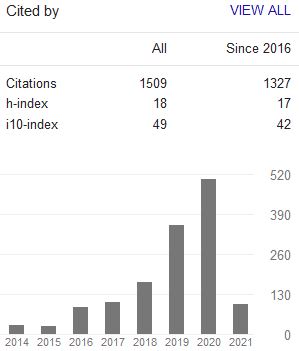DEFENDING SPACES, PREVENTING CONFLICTS: The Politics of Identity Representation in the Nahdliyin Mosques in Malang Raya
Abstract
Keywords
Full Text:
PDFReferences
Grabar, Oleg. “The Architecture of Power: Palaces, Citadels, and Fortifications.” in George Michell (ed.). Architecture of the Islamic World: Its History and Social Meaning. London: Thames & Hudson, 1978.
Holod, Renata and Hasan-Uddin Khan. The Mosques and the Modern World: Architects, Patrons, and Designs since the 1950s. London: Thames & Hudson, 1997.
Ismail, Alice Sabrina and Mohd. Tajuddin Mohd. Rasdi. “Mosque Architecture and Political Agenda in Twentieth-century Malaysia.” Journal of Architecture, 15, 2 (2010), pp. 137–152.
Kusno, Abidin. Behind the Postcolonial: Architecture, Urban Space and Political Cultures in Indonesia. New York: Routledge, 2000.
----------. ‘The Reality of One-which-is-Two” – Mosque Battles and Other Stories: Notes on Architecture, Religion, and Politics in the Javanese World.” Journal of Architectural Education, 57, 1 (2003), pp. 57–67.
Meerwein, G., B. Rodeck, and FH. Mahnke. Color - Communication in Architectural Space. Switzerland: Birkhäuser, 2007.
Necipoglu, Gulru. “Anatolia and the Ottoman Legacy.” Martin Frishman and Hassan-Uddin Khan (eds). The Mosque: History, Architectural Development & Regional Diversity. London: Thames & Hudson, 1994.
O’Neill, Hugh. “Diadem or Dome: Sovereignty and Transformation of the Mosque in Sumatera.” Tectonic Dimension in Islamic Architectural Tradition in Indonesia, Proceedings of 3rd International Symposium on Islamic Expression in Indonesian Architecture. Yogyakarta: Department of Architecture, Faculty of Civil Engineering and Planning Islamic University of Indonesia, 2000.
Popescu, Carmen. “Space, Time, Identity.” National Identities, 8 (2006), pp. 189-206.
Prijotomo, Josef. Dari Lamin dan Bilik Pengakuan Dosa. Surabaya: Wastu Lanas Grafika, 2004.
Rijal, Najamuddin Khairur. “Respons Pemerintah Lokal terhadap Ancaman Terorisme Global: Kasus ISIS di Kota Malang.” Jurnal Global & Strategis CSGS Unair Surabaya, 10, 1 (2016), pp. 30-54.
Rijal, Syamsul. “Friday Prayer and an Indonesian Islamic Identity in Canberra, Australia.” Journal of Indonesian Islam, 3, 1 (2009), pp. 148-167.
Roose, Eric. The Architectural Representation of Islam; Muslim-Commissioned Mosque Design in the Netherlands. Amsterdam: ISIM/Amsterdam University Press, 2009.
Saerozi, Muh. “From Controversi to Tolerance: Dynamics of the Development of Istiqomah Mosque in Front of a Church in Ungaran Central Java Indonesia.” Journal of Indonesian Islam, 11, 2 (2017), pp. 423-458.
Şimşek, S., Z. Polvan, and T. Yeşilşerit. “The Mosque as a Divisive Symbol in the Turkish Political Landscape.” Turkish Studies, 7, 3 (2006), p. 489–508.
Sudjic, Deyan. The Edifice Complex: How the Rich and Powerful Shape the World. London: Penguin Press, 2005.
Verkaaik, Oskar. Religious Architecture: Anthropological Perspectives. Amsterdam: Amsterdam University Press, 2013.
Woodward, Kath. Understanding Identity. London: Oxford University Press Inc., 2002.
DOI: 10.15642/JIIS.2020.14.1.26-50
Refbacks
- There are currently no refbacks.
Indexed by:
Journal of Indonesian Islam (ISSN 1978-6301 and E-ISSN 2355-6994) is published by the Postgraduate Program (PPs) and the Institute for the Study of Religion and Society (LSAS), State Islamic University (UIN) of Sunan Ampel Surabaya.
Journal of Indonesian Islam by http://jiis.uinsby.ac.id/index.php/JIIs/index is licensed under a Creative Commons Attribution-ShareAlike 4.0 International License.
Copyright ©2020 State Islamic University (UIN) of Sunan Ampel Surabaya. Powered by Public Knowledge Project OJS.







